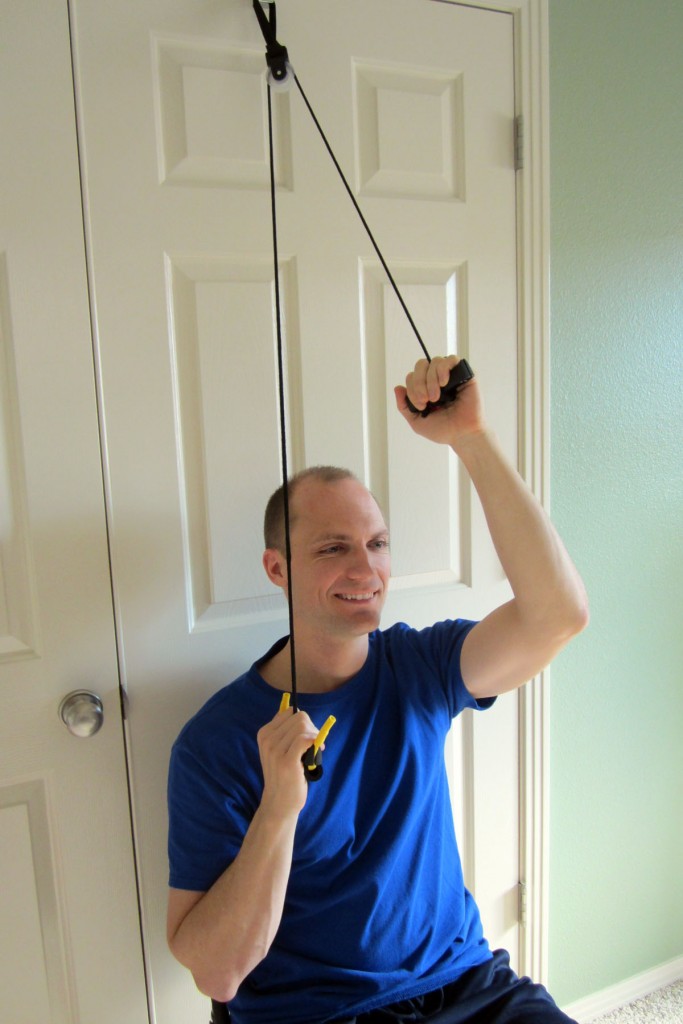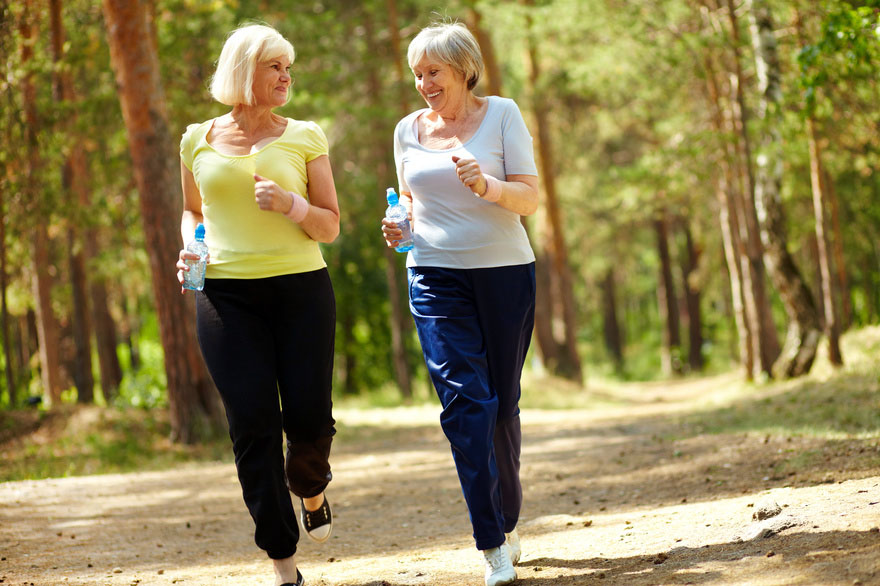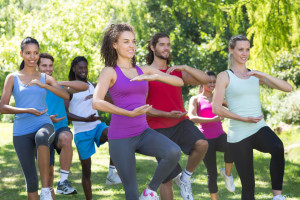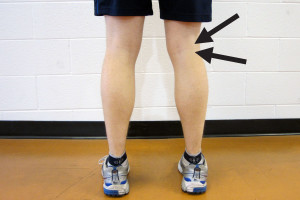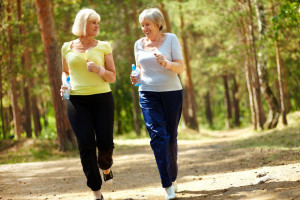Q. I’m going in for a total knee replacement. I wondered what type of advice you could give me so that I’m better prepared. Thanks! -Judy
A. Great question, Judy! A total knee replacement is often referred to as a total knee arthroplasty (TKA). It’s really more like a resurfacing of the knee joint. TKA is most often used as a treatment for those suffering from moderate to severe osteoarthritis in the knee. Other common causes for the procedure include Rheumatoid arthritis and injury. Knee replacement is more common among women and the likelihood of replacement increases with age.
The following information on total knee arthroplasty (TKA) and rehabilitation is not meant to be all inclusive, but to serve as a starting point as to what you will likely experience during rehabilitation. Each person’s rehabilitation process is likely to vary depending on his/her particular needs.
Four basic steps are performed in a Total Knee Arthroplasty (TKA):
- Prepare the bone. The damaged cartilage surfaces at the ends of the femur and tibia are removed along with a small amount of underlying bone.
- Position the metal implants. The removed cartilage and bone is replaced with metal components that recreate the surface of the joint.
- Resurface the patella. The undersurface of the patella (kneecap) is cut and resurfaced with a plastic button. This is not performed with every procedure unless necessary.
- Insert a spacer. A medical-grade plastic spacer is inserted between the metal components to create a smooth gliding surface.
Proper rehabilitation is a critical component to overall success with this procedure. In most cases, a physical therapist and possibly an occupational therapist will be involved in the rehabilitation process. I tend to classify the rehabilitation into the following four major stages.
Stage I Rehabilitation
This is the initial post-surgical recovery stage in the hospital with physical therapy (typically the same day). The goal is for you (the patient) to be upright and walking with an assistive device, such as a walker, in order to initiate very basic motion in the knee.
Although same day procedures can be performed, you will typically spend two to three days in the hospital following this procedure. With the new surgical techniques utilized, most patients will not have any weight bearing or other mobility precautions.
There are risks of complications with any medical procedure. The biggest risk initially is falling either from the newly operated knee giving way or complications from medication (which can cause dizziness, lightheadedness or other symptoms). Other possible unlikely complications include: loosening of the prosthetic within the bone; blood clots; and infection.
Prior to leaving the hospital, pain management is a priority. In addition, you need to be able to walk at least to a bathroom (typically with some assistance to maintain safety).
Four typical options for discharge:
- Discharge home and continue rehabilitation with in-home care.
- Discharge home and initiate physical therapy in an outpatient clinic.
- Discharge to a skilled nursing facility. This is typically reserved for those who are expected to need an extended recovery.
- Discharge to a sub-acute rehabilitation facility. This is typically reserved for those who may need additional medical care, but who can tolerate a more intensive rehabilitation program.
Regardless of the discharge location, the initial treatment is very similar. Focus on pain management. Improve your ability to ambulate. Initiate RICE (Rest, Ice, Compression, and Elevation). Start with basic range of motion (ROM) exercises (as described in Stage II). Also, please refer to Total Knee Replacement Rehabilitation Exercises for many of the most common exercises you may perform depending on your individual need.
Medication Management
A major component of the rehabilitation will be to insure proper pain management. This is typically through pain medication (both narcotic based and/or acetaminophen). It is important to maintain proper pain management because it allows you to perform necessary activities of daily living (ADLs) as you progress through your rehabilitation. Additional medication management may be necessary if you’re taking blood thinning medications in order to decrease the risk of blood clots.
RICE
- Rest. Your body has just undergone a major surgery. It will require more rest initially to properly heal and recover. Although exercise and movement will be critical to your recovery, additional rest will be needed. Limit walking on any hard surfaces, such as the flooring in grocery stores, for at least the first three to four weeks in order to minimize pain and swelling.
- Ice. Apply ice to the painful areas especially in and around the knee. The rule for icing is to apply ice no more than twenty minutes per hour. Do not place the ice directly against the skin, especially if you are using a gel style Cold Pack. A bag of frozen peas can be ideal. Individuals with poor circulation or impaired sensation should take particular care when icing. Often, your physician will prescribe a machine known as an IceMan (or something comparable) to help with cryotherapy to reduce pain and inflammation.
- Compression helps to prevent and decrease swelling. Swelling can cause increased pain and slow the healing response, so limit it as much as possible. You may utilize a common ACE wrap or your physician may recommend wearing TED hose which helps with swelling and decreases the risk of blood clots.
- Elevation. When resting, keep the leg as straight as possible and elevated above the level of your heart to help reduce swelling (edema). Try not to prop anything under the knee because it would cause flexion (bending). You want the knee to move straight into full extension.
Stage II Rehabilitation
Stage II typically starts on about day three to five. It can last up to six to eight weeks depending on your recovery. Continue to progress with pain management, edema management, gait/ambulation training, RICE, and range of motion as initiated in Stage I.
Movement
Regaining range of motion (ROM) is one of the primary goals with TKA rehabilitation. Knee extension (straightening) and knee flexion (bending) must be regained as quickly as possible. There is a limited window of time that ROM must be restored. Aim for full recovery of ROM within the first six to eight weeks (if not sooner).
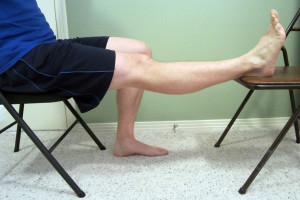
Regaining both full knee extension and flexion are critical to long term success. Once you regain full ROM, you must maintain it throughout the process. Movement helps tissues receive the needed nutrients and can help with pain management. Movement, including frequent toe tapping and ankle motion along with knee ROM, can also help to reduce swelling and prevents blood clots.
If the patient doesn’t regain adequate motion through the rehabilitation process, I find that knee pain usually remains a long term issue along with poor mobility. The goal for TKA ROM is usually 0-120 degrees of motion. (Zero meaning that the knee is perfectly straight. The 120 degrees is how far backward you can bend the knee.) For a point of reference, touching your heel to your buttock is usually about 150 degrees of motion. Your knee will not have the same available ROM as a healthy knee joint, but it will be functional for most tasks.
Restoring full ROM can be accomplished in many ways. The gentlest way is to perform heel slides by lying on your back and sliding your heel toward your buttock (as demonstrated in Total Knee Replacement Rehabilitation Exercises). A stationary bicycle is also very helpful. These exercises should be performed within a mild to moderate amount of pain and discomfort. Although ROM exercises can be a little painful, they don’t damage the new joint and ultimately, the ROM will help to decrease pain.
Ambulation
In most cases, your initial ambulation will require an assistive device such as a front wheeled walker (FWW), crutches or a cane for safety and pain relief. Initially, the knee motion will be limited. Pain and swelling will affect the strength of the leg. This means that the leg could have a tendency to give way or be unsteady. This should improve quickly over the first several days, but I always recommend an assistive device initially.
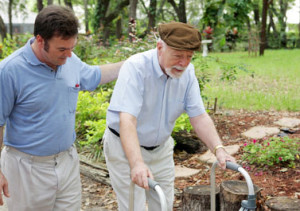
Walking with an assistive device also gives you the opportunity to walk with a normal gait pattern which will help improve your knee’s range of motion and aid in your recovery. Your physical therapist will work with you to help restore as normal and safe a gait pattern as possible. It is common to feel or even hear clicking during ambulation and movement due to the plastic and metal components. This is normal (particularly, early in your rehabilitation when the knee is swollen and ROM remains restricted).
Strengthening
Increasing your leg strength is an important part of your recovery, but it will not necessarily be an initial focus of your recovery. The primary goals for rehabilitation initially involve proper ambulation, reducing the swelling, pain relief, and range of motion for your knee. Adequate strength throughout the lower extremity is important. The primary focus will be on quadriceps strengthening and hip abduction (gluteus medius) strengthening. These two muscle groups tend to be the most important in regaining full functional mobility after TKA.
Stage III Rehabilitation
Similar to Stage II, rehabilitation in Stage III continues to focus on range of motion (ROM). At this point, you would typically ride a stationary bike regularly while working to maintain full ROM (0-120 degrees). Movement helps tissues receive the needed nutrients and can help with pain management. Movement also reduces swelling and prevents blood clots. This stage is typically eight to twelve weeks after the operation.
The Stage III exercise program (as demonstrated in Total Knee Replacement Rehabilitation Exercises) is designed to improve strength of the entire lower extremity while still focusing on quadriceps and gluteus medius (hip abduction) strength. Balance and gait drills are typically introduced. The goal is to ambulate without any noticeable abnormalities from the TKA and to reduce the risk of falls (particularly if you’re no longer using an assistive device).
During Stage III rehabilitation, I would generally expect that you have proper pain management without the use of narcotic medications. Mobility for basic daily tasks is usually quite good and the intensity of the rehabilitation has increased. In this stage, you’re working hard on self-rehabilitation and may be continuing formal rehabilitation in an outpatient physical therapy clinic.
Stage IV Rehabilitation
Stage IV usually occurs four to nine months after the operation. Exercises should be designed to help maximize your mobility and desired mobility outcome/goal. Increased exercise intensity and more dynamic balance training are introduced. A return to full functional mobility is the desired outcome. In this stage, a majority of the exercises are performed independently. You may intermittently consult with a physical therapist to progress in rehabilitation to insure that you’re meeting your goals.
Each person’s rehabilitation process is likely to vary depending on his/her particular needs. Always be open and honest with the medical professionals who are assisting you. If you feel as though something is not quite right, don’t hesitate in discussing the issue.
During your recovery, don’t forget the basics! Proper hydration and consuming nutrient dense food is critical to providing your body with the necessary building blocks to optimize your recovery. Proper hydration is critical in reducing your risk of blood clots. It also helps the body to deliver much needed hydration and nutrients to your healing tissues.
Physical therapy will be an important component to your recovery and rehabilitation. If you don’t already have a physical therapist that you are comfortable working with, The American Physical Therapy Association offers a wonderful resource to help find one in your area. Depending on how you progress during your rehabilitation, you will likely work with multiple physical therapists while at the acute care or rehabilitation hospital, during in-home care, and/or at an outpatient clinic.
Thank you, Judy, for your question. Good luck with your procedure! I hope your rehabilitation for your knee goes smoothly and that you recover quickly!
Have you undergone a total knee arthroplasty (TKA)? What was your experience like? Please share your best tips for recovery.
If you have a question that you would like featured in an upcoming blog post, please comment below or submit your question to contact@thePhysicalTherapyAdvisor.com. Be sure to join our growing community on Facebook by liking The Physical Therapy Advisor!
Disclaimer: The Physical Therapy Advisor blog is for general informational purposes only and does not constitute the practice of medicine or other professional health care services, including the giving of medical advice. No health care provider/patient relationship is formed. The use of information on this blog or materials linked from this blog is at your own risk. The content of this blog is not intended to be a substitute for professional medical advice, diagnosis, or treatment. Do not disregard, or delay in obtaining, medical advice for any medical condition you may have. Please seek the assistance of your health care professionals for any such conditions.

 About Dr. Matthew Crooks
About Dr. Matthew Crooks

